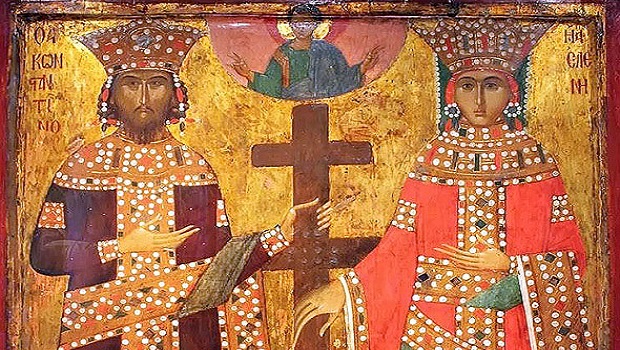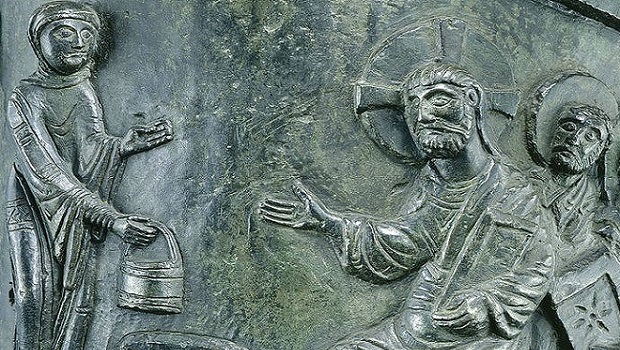Metropolitan of Pisidia Sotirios
At every Vespers, we hear the prayer: “Lord, now You are letting Your servant depart in peace, according to Your word; For my eyes have seen your salvation …” (Luke 2: 29-31). As St. Luke the Evangelist writes, it is with these words that the Righteous Symeon praised and thanked God, when he took the 40 day old baby Jesus in his arms, while in the Temple of Jerusalem.
But who was Symeon, who claimed this special honor from God? He was a devout and faithful man, eagerly awaiting the fulfillment of the Biblical Prophecies (from Isaiah and the other Prophets) concerning the coming of Christ, the Messiah who would bring salvation to the people of Israel. Additionally, the Holy Spirit was with Symeon, and promised him that he would not leave this world before seeing with his own eyes Christ the Savior. With this in mind, we can understand the joy he must have felt when the Holy Spirit told him that the day had come, urging him to go to the Temple. Immediately, he rushed to meet the One he had been waiting his whole life to see. As soon as he saw the Virgin Mary with Joseph, bringing the Divine Infant to the Temple, he recognized Christ, the Messiah. As St. Basil the Great writes, the divine power of the Infant illuminated the pure vision of Simeon’s heart, and allowed him to see God. To see that He was not a simple baby like any other, but in Him dwelt the whole Diety. The pious Symeon, overcome by these feelings, stretched out his hands and accepted Jesus into his arms, glorifying God and said: “Lord, now You are letting Your servant depart in peace, according to Your word; For my eyes have seen your salvation which You have prepared before the face of all peoples, a light to bring revelation to the Gentiles, and the glory of Your people Israel.“(Luke 2: 29-32).
This Ode, which is called the Canticle or Song of Symeon, is one of the most beautiful in the Holy Bible. Many of the Holy Fathers of our Church have delved deeply into its content, which is why it has been established for daily use in our holy churches.
Let us briefly look at some of the key themes contained in these words of the Elder Symeon:
1.- The strong desire of the human soul to meet Christ.
As we have seen, Symeon received a promise from the Holy Spirit that he would not die before seeing the Messiah. He waited many years for this promise to fulfilled, and for decades he saw nothing. He had reached the age of 100, but still received no sign. Even so, he did not despair. Interpreters of this passage from the Bible estimate that Symeon had reached the age of 115 before his sacred desire became a reality. This is a great encouragement for us, to be patient and faithful to our Lord’s promises. It may not come right away or when we would like it to, but in the end, God keeps His promises.
2.- The complete satisfaction of the human soul from its meeting with Christ the Savior.
Righteous Symeon, from the moment he took the Divine Infant in his arms, felt that he had acquired all the joys and treasures in the world. He wanted nothing more in his life, believing that his purpose was accomplished. That is why he felt it necessary to ask God to release him, to loosen the bonds of earth, and set sail for the heavenly port! In other words: Lord, release me from this life and allow death to come, and dismiss your faithful servant so that he can rest. I saw with my own eyes Your Son! I expect nothing else in this world, so take my soul to be near You.
Such Truth! We Orthodox Christians also experience Symeon’s satisfaction and fullness from our Communion with Christ. He only held Christ in his arms for only a few minutes, but we receive many more blessings from Him: Our baptism unites us with Christ, and with Holy Communion the whole of Christ comes and dwells within us. And in order for the Church to help us feel and express this inner joy and peace, the Song of Symeon was added to the Prayers after Holy Communion. Do we live this joyful gladness that Christ offers us, deeply in our hearts? Or do we seek other kinds of satisfaction, far away from Him? It is good for each of us to look honestly in the depths of our soul, and reflect on these questions.
Due to the absence of time, we will continue this topic in our next Sermon. For now, let us close with the hymn of the Feast of the Presentation of Christ in the Temple ( Ypapanti in Greek).
“O faithful, let us welcome Christ and receive Him with canticles of praise and glory. He is the Salvation Symeon has seen”.
Amen.
Source: pemptousia.com




0 Comments